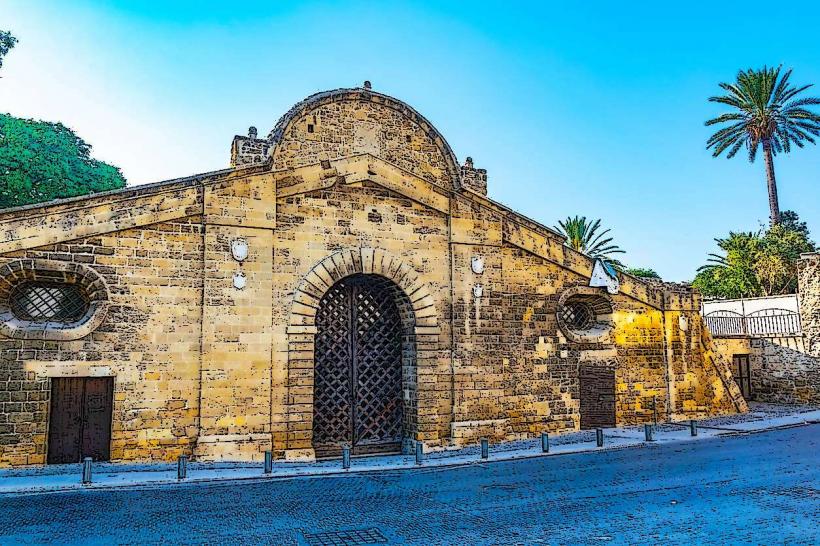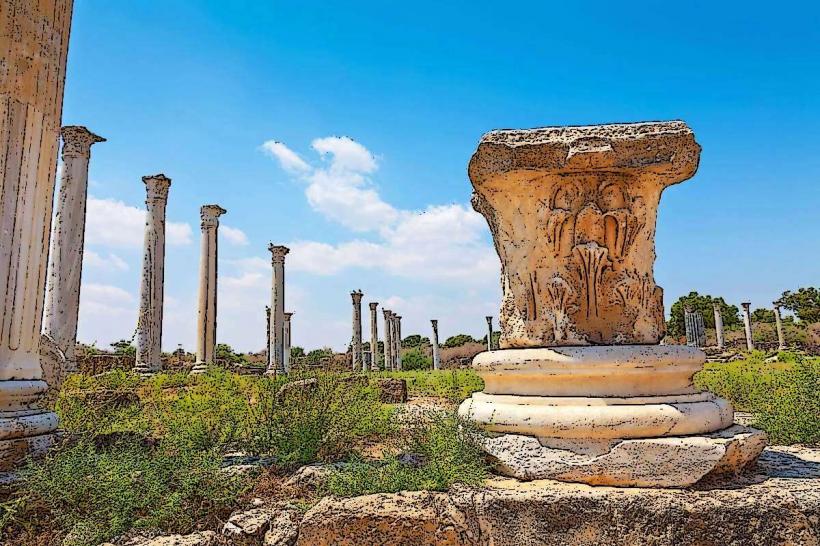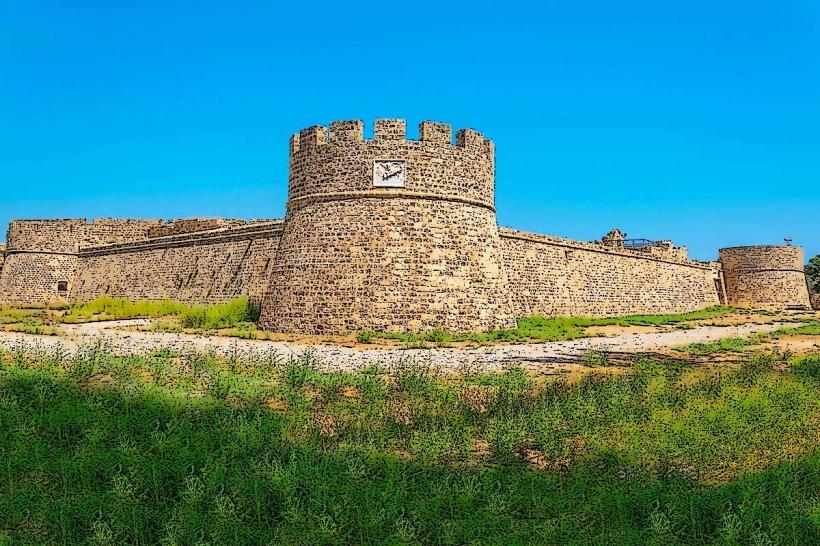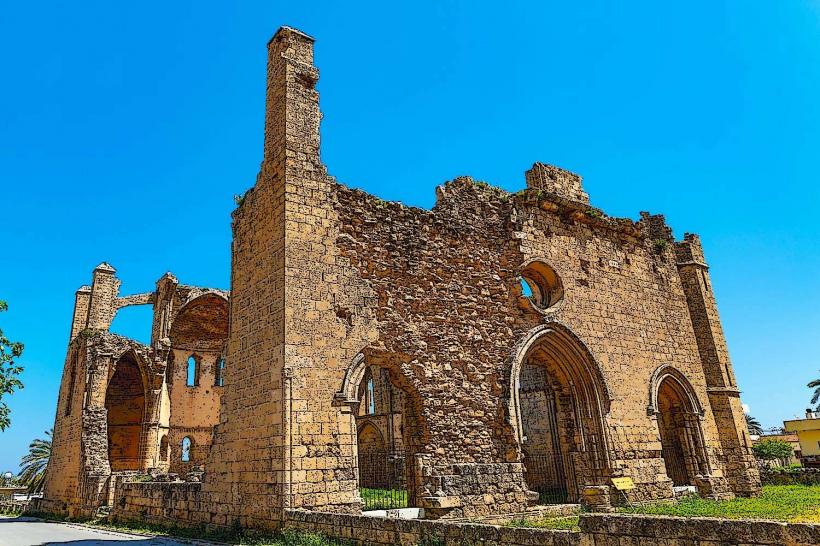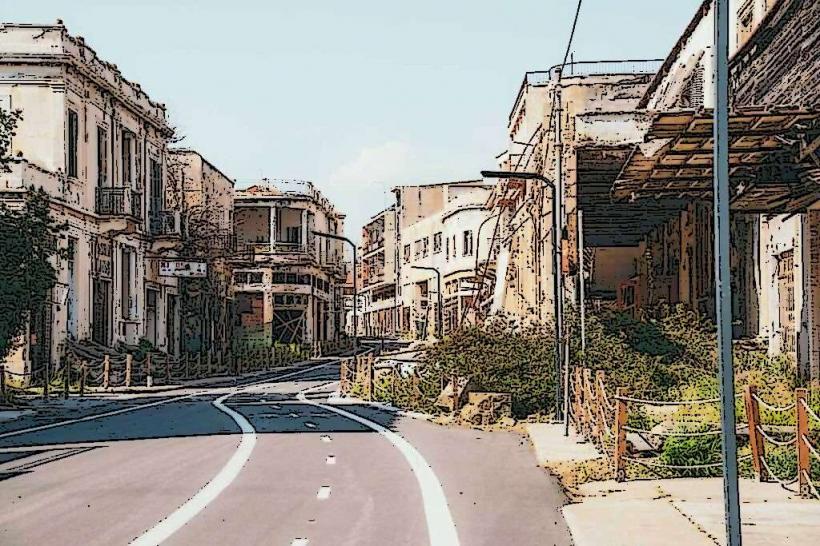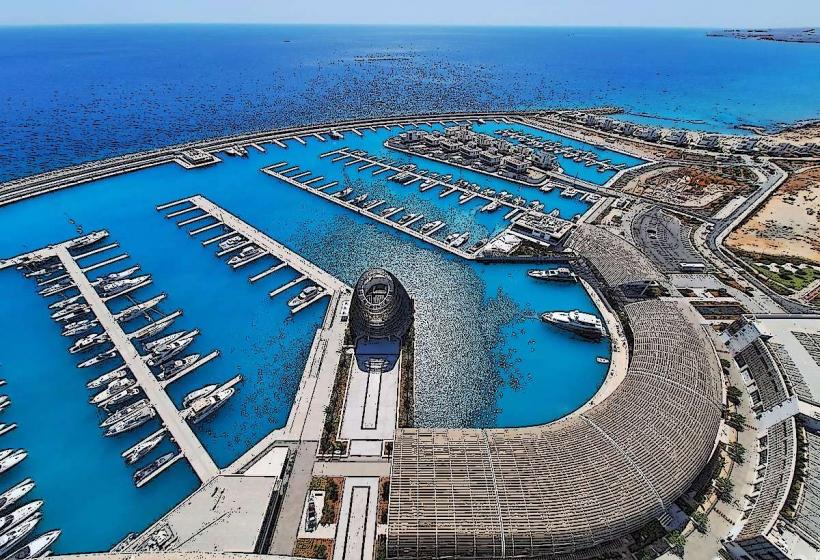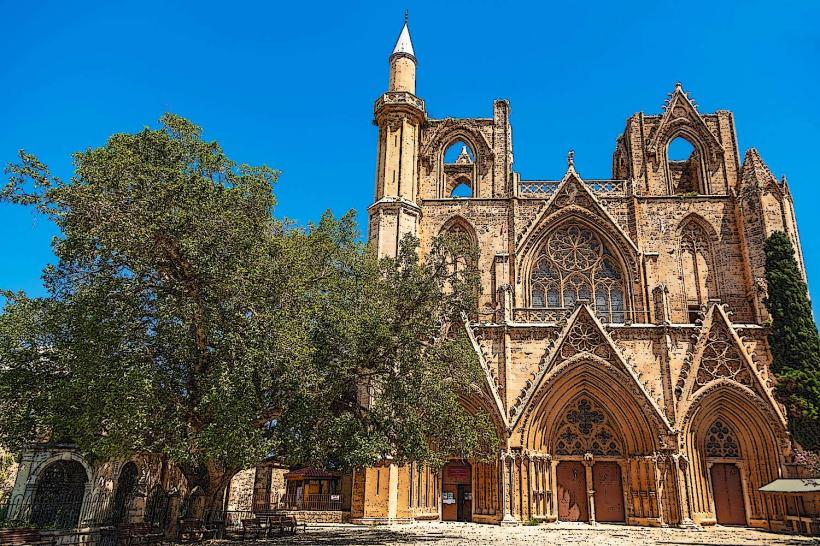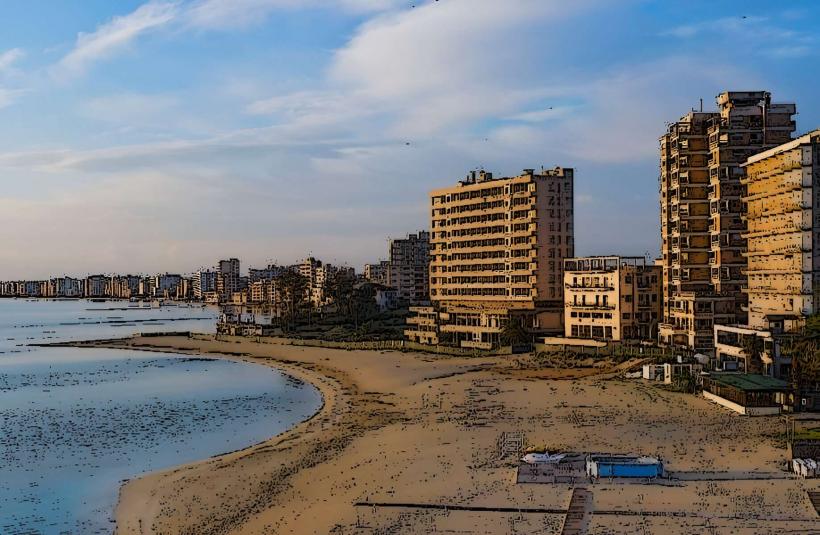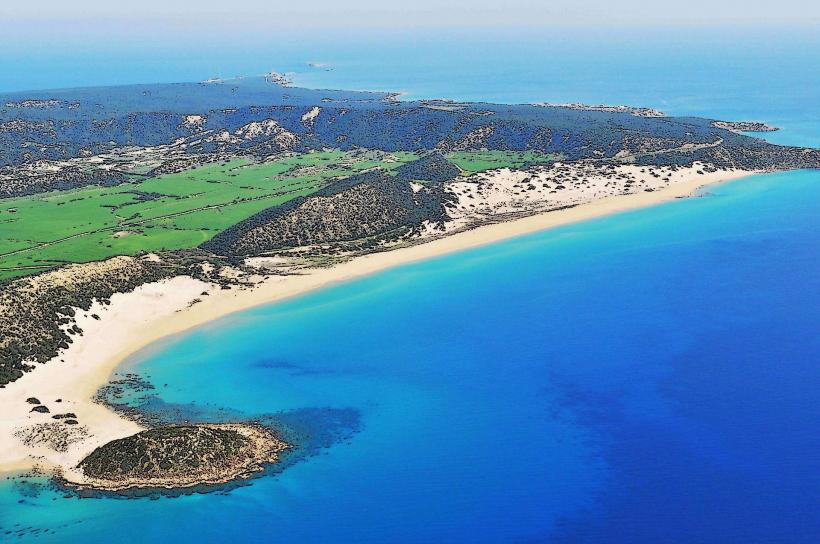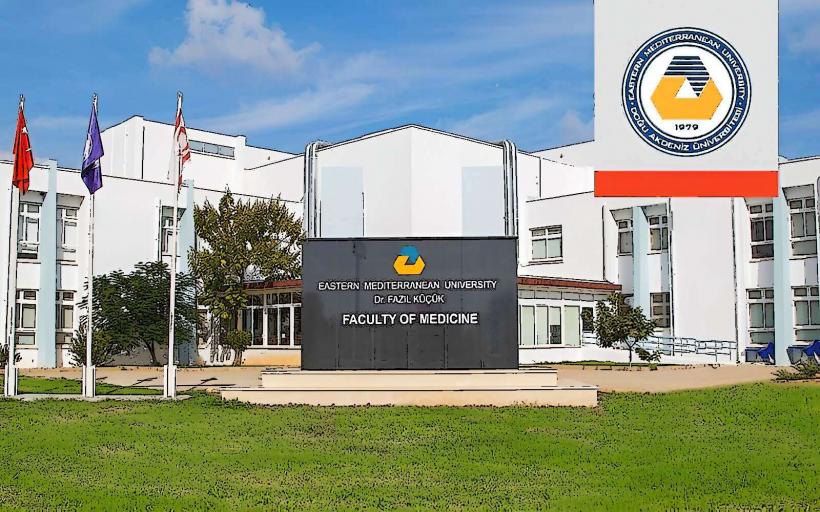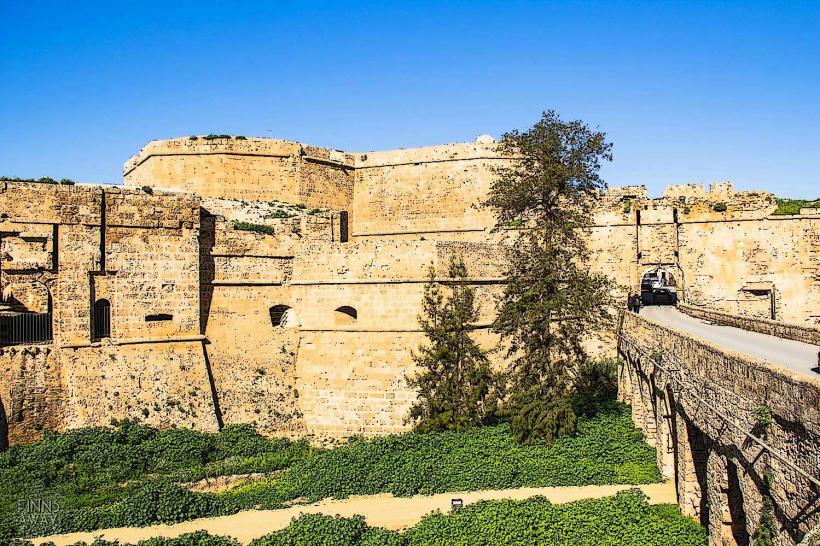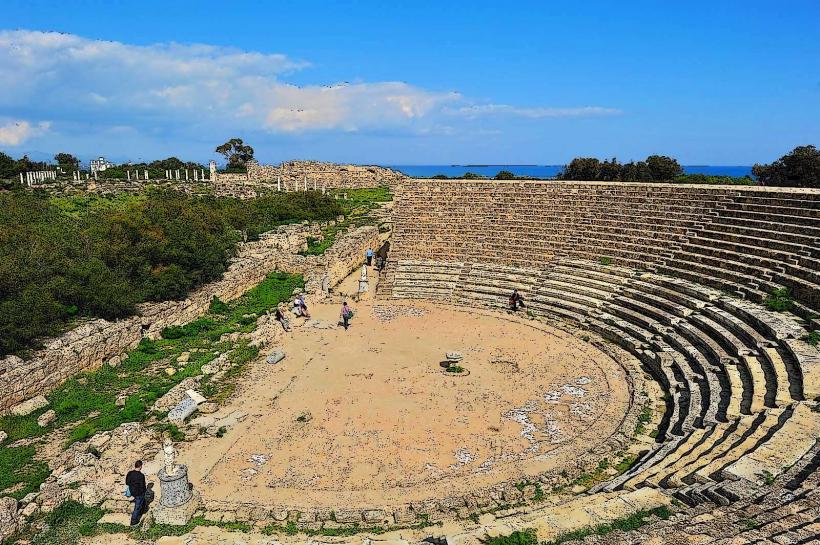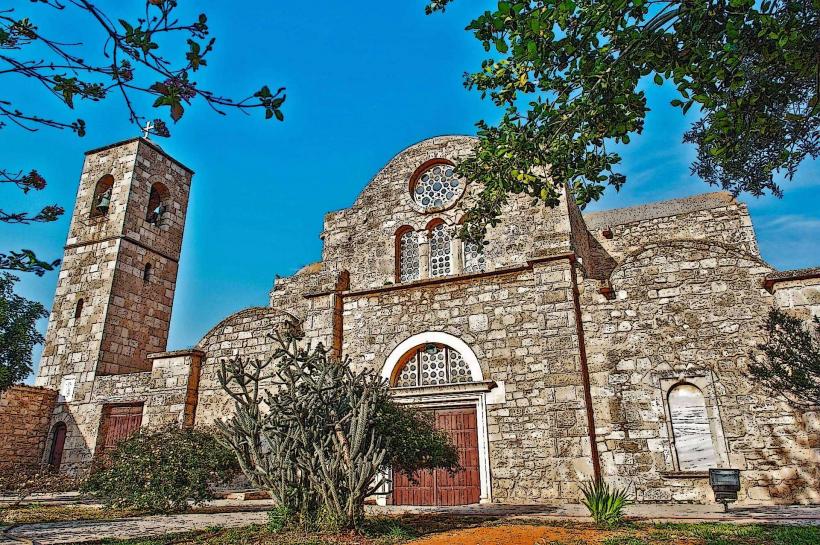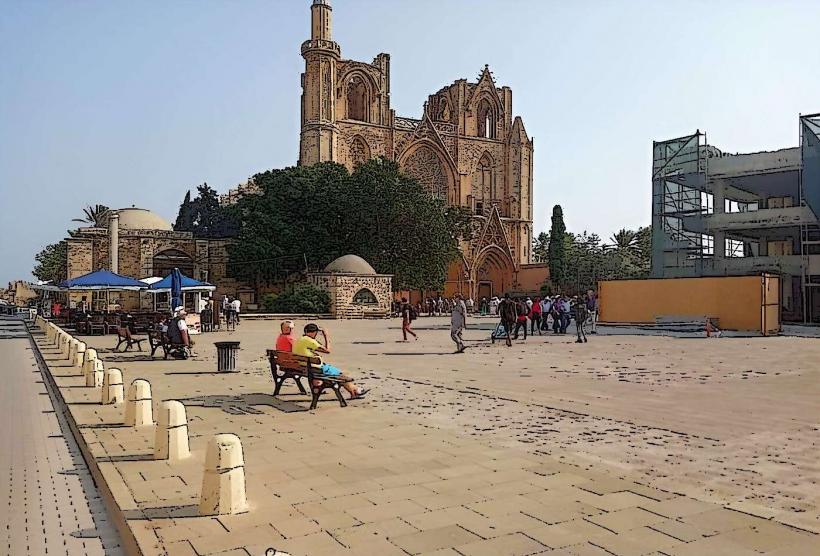Information
Landmark: Lala Mustafa Pasha MosqueCity: Famagusta
Country: Cyprus
Continent: Europe
The Lala Mustafa Pasha Mosque, located in Famagusta, Cyprus, is an exquisite example of Gothic architecture that was later adapted to Islamic worship. Originally built as a Catholic cathedral during the Lusignan period, it is now a functioning mosque and a symbol of Famagusta's layered history.
Historical Overview
Construction as St. Nicholas Cathedral:
- Built between 1298 and 1400 by the Lusignan rulers, the cathedral was modeled after the Reims Cathedral in France.
- It served as the coronation site for the Lusignan kings of Cyprus, who also claimed the title of Kings of Jerusalem.
- The cathedral was dedicated to Saint Nicholas, the patron saint of sailors.
Conversion to a Mosque:
- After the Ottoman conquest of Cyprus in 1571, the cathedral was converted into a mosque.
- The Ottomans renamed it the Lala Mustafa Pasha Mosque, in honor of the commander who led the conquest of Cyprus.
- The Christian features, such as statues and altars, were removed, and Islamic elements, such as a mihrab (prayer niche) and minbar (pulpit), were added. A minaret was also constructed.
Architectural Features
Exterior:
- Gothic Façade:
- The façade is strikingly Gothic, with pointed arches, rose windows, and intricate stone carvings.
- The twin towers, typical of Gothic cathedrals, are partially intact but were not fully restored due to the shift in its religious function.
- Minaret:
- A slender minaret was added to the building’s northern corner, blending Islamic and Gothic aesthetics.
Interior:
- Vaulted Ceilings:
- The cathedral’s original high vaulted ceilings and ribbed arches remain, creating an awe-inspiring sense of space.
- Islamic Adaptations:
- The removal of Christian iconography allowed for a minimalist Islamic aesthetic.
- Prayer mats cover the floors, and the orientation was adjusted slightly to face Mecca.
Surroundings:
- Courtyard and Tree of Hippocrates:
- In the mosque's courtyard stands a massive sycamore tree, said to have been planted in 1298, the year the cathedral's construction began.
Cultural and Historical Significance
Religious Fusion:
- The building is a unique representation of the island's shifting religious and cultural identities, transitioning from Catholicism to Islam while retaining its Gothic roots.
Historical Role:
- It served as a political and religious center during both the Lusignan and Ottoman periods.
- Today, it remains an active place of worship and a symbol of the city’s rich past.
Visitor Information
Access:
- Located in the heart of Famagusta’s walled city, the mosque is easily accessible on foot or by car.
- Visitors are welcome to explore the site, though modest attire is required as it is an active place of worship.
Highlights for Visitors:
- Admire the stunning Gothic architecture.
- Explore the serene courtyard and ancient sycamore tree.
- Learn about the building's transformation from cathedral to mosque.

